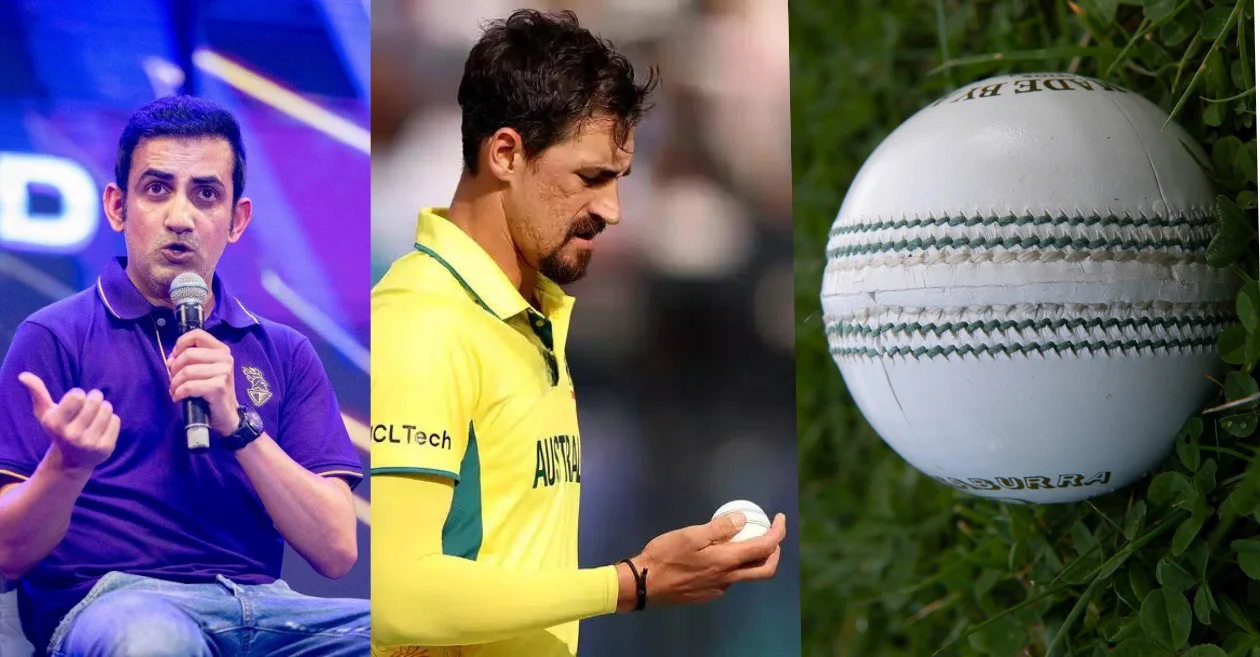In a recent interview on Ravichandran Ashwin’s YouTube channel, former Indian cricketer and current Kolkata Knight Riders (KKR) mentor Gautam Gambhir expressed strong criticism against the International Cricket Council’s (ICC) rule of using two new balls in One Day Internationals (ODIs). Implemented in 2011, the rule was designed to maintain a harder, newer ball throughout the innings to encourage dynamic power hitting. However, Gambhir believes this change has negatively impacted the role of finger spinners in the game.
The Controversial Two New Balls Rule
The ICC’s decision to introduce two new balls per innings in ODIs was aimed at ensuring that batsmen could face a relatively newer and harder ball in both halves of the innings. The intention was to increase scoring opportunities, enhance the excitement of the game, and potentially level the playing field by mitigating the effects of a worn-out ball. However, this rule has been contentious since its inception, with several players and experts questioning its impact on the game’s traditional dynamics.
Gambhir’s Strong Disapproval
Gautam Gambhir, a renowned figure in cricket, didn’t mince words when discussing the rule. Labeling it the “worst thing to happen in white-ball cricket,” Gambhir argued that the two-ball rule has stripped finger spinners of their efficacy. “The worst thing that has happened in white-ball cricket is the introduction of two new balls. The reason why I say that is because you have taken away the entire skill of a finger spinner from a game, whether it be a left-arm spinner or an off-spinner,” Gambhir stated emphatically.
Impact on Finger Spinners
Gambhir highlighted how the rule has made life difficult for finger spinners, who traditionally thrive with an older ball that can grip and turn on worn surfaces. With two new balls, spinners often face the challenge of bowling with a relatively new and hard ball throughout the innings, limiting their ability to extract turn and making them easier targets for aggressive batsmen. “This rule has taken away two of the best finger spinners in the world, who should have played more white-ball cricket, you (Ashwin) and Nathan Lyon,” Gambhir pointed out, emphasizing the adverse effect on prominent spinners.
ICC’s Role and Responsibility
Gambhir didn’t just stop at criticizing the rule; he also took aim at the ICC’s broader responsibilities. He called on the governing body to promote and support all types of bowlers, including finger spinners, to maintain a balanced and inclusive game. “The job of the ICC is to promote every kind of bowler who wants to become an off-spinner or a finger-spinner. I think the ICC has messed up,” Gambhir remarked. He urged the ICC to reconsider and potentially revert to the traditional single-ball format in ODIs to preserve the art of finger spin bowling.
The Case for One Ball Per Innings
Advocating for a return to using just one ball throughout the 50 overs of an ODI, Gambhir made a compelling case for how this change would restore balance to the game. A single ball, aging over the course of the innings, would provide spinners with more opportunities to turn the ball and outsmart batsmen, adding an additional layer of strategy and skill. “Hopefully, they can change it going forward and have just one ball used for the entire 50 overs of an ODI match,” Gambhir suggested, envisioning a game where spinners can once again play a pivotal role.
The Broader Impact on the Game
Gambhir’s critique also touched on the broader implications of the two-ball rule for the game’s dynamics. By favoring pace and power over skill and guile, the rule has arguably skewed the balance too heavily in favor of batsmen. This shift not only diminishes the role of spinners but also impacts the overall competitiveness and variety of the game. On flat tracks with short boundaries and power hitters, finger spinners find it increasingly difficult to make an impact, as Gambhir observed.
A Call for Change
Concluding his argument, Gambhir reiterated the need for a reassessment of the two-ball rule, emphasizing the importance of preserving the diversity and balance that has traditionally defined cricket. By reinstating the use of a single ball per innings, the ICC could help reintegrate finger spinners into the fabric of ODI cricket, ensuring that their skills and contributions are once again recognized and valued. “The reason why you guys didn’t play was because there was nothing for you, against all these odds on a flat track with power hitters on a shirt boundary, and with DRS as well,” Gambhir lamented, advocating for a change that could revitalize the role of spinners in the modern game.
In sum, Gautam Gambhir’s impassioned critique of the two-ball rule in ODIs highlights significant concerns about the impact on finger spinners and the overall balance of the game. His call for the ICC to reconsider this rule underscores the ongoing debate about how best to preserve the rich diversity and strategic depth that make cricket such a beloved sport worldwide. As discussions continue, it remains to be seen whether the ICC will heed these calls and take steps to restore the traditional dynamics of ODI cricket.
Please check for information on the best betting sites in India and IPL betting sites – https://selectory.org/best-betting-sites/















